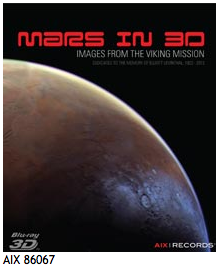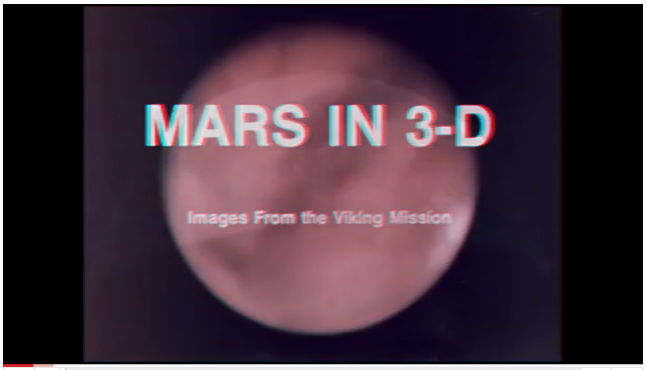Collection Feature: 1979 Mars in 3-D Movie
From the Elliott C. Levinthal Viking Lander
Imaging Science Team Papers, 1970-1980 (PP04.02)

The first panoramic view of the surface of Mars, taken by the Viking 1 Lander.
Mars in 3-D is now remastered in high definition 3-D and available for viewing on Blu-ray. Produced by Elliott Levinthal of Stanford University, this 32-minute documentary film features mankind's earliest images from the surface of Mars, captured by NASA's Viking landers in the late 1970s. Encouraged by John Chowning of Stanford University's Center for Computer Research in Music and Acoustics (CCRMA), Michael McNabb, a former student who collaborated on the original soundtrack, completed this massive remastering project. McNabb constructed the new version from original 16mm film footage, sound reels, and related documentation loaned from the NASA Ames History Archives.
Remastered 3-D high definition version on Blu-ray

Anaglyph version on YouTube (red-cyan 3-D glasses required)

+ http://www.youtube.com/watch?v=ubRHSg5daMs
The Viking Missions to Mars
In August and September of 1975 NASA sent two spacecraft to Mars to photograph the planet, gather data about the structure and composition of its atmosphere, and look for evidence of life. Each craft consisted of an orbiter with a lander tucked inside, which deployed to the Martian surface. While the orbiters circled Mars capturing aerial images, the landers collected data about the atmosphere during their descent to the surface, then collected and analyzed soil samples and photographed the landscape using stereoscopic cameras. The vast amount of data collected from the Viking missions gave us an incredibly detailed view of Mars. More than thirty years later, the usefulness of this information endures. Still analyzed by today's planetary scientists, these data continue to spark new ideas and provoke debates about the red planet.
Related Content
+ Michael McNabb's account of the remastering process
+ Guide to the Elliott C. Levinthal Viking Lander Imaging Science Team Papers
+ Script for Mars in 3-D with Levinthal's handwritten edits (from the Levinthal Papers)
+ Description of the mosaicking process (from the Levinthal Papers)
+ Test photograph with description taken with the 1975 Viking Lander camera at the Great Sand Dunes National Monurnent in Colorado (from the Levinthal Papers)
+ NASA Mission Pages for the Viking Missions to Mars
Viking 1 and 2 images and descriptions at NASA's National Space Science Data Center Archives
+ Images of Mars captured by Viking 1 and 2
Spacecraft descriptions and other information about Viking 1 and 2 at the National Space Science Data Center
+ Viking 1 Lander
+ Viking 1 Orbiter
+ Viking 2 Lander
+ Viking 2 Orbiter
|





